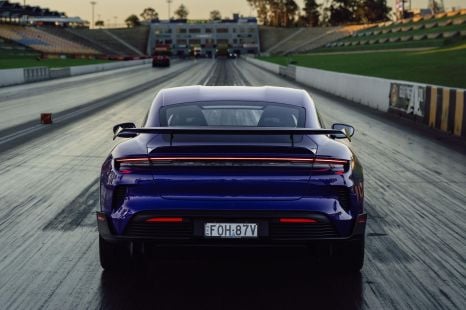

Toby Hagon
Banned! The car that’s too quick for Aussie drag strips
3 Hours Ago
The Hyundai Veloster Turbo has bold and distinctive exterior styling, but it comes at a significant cost.
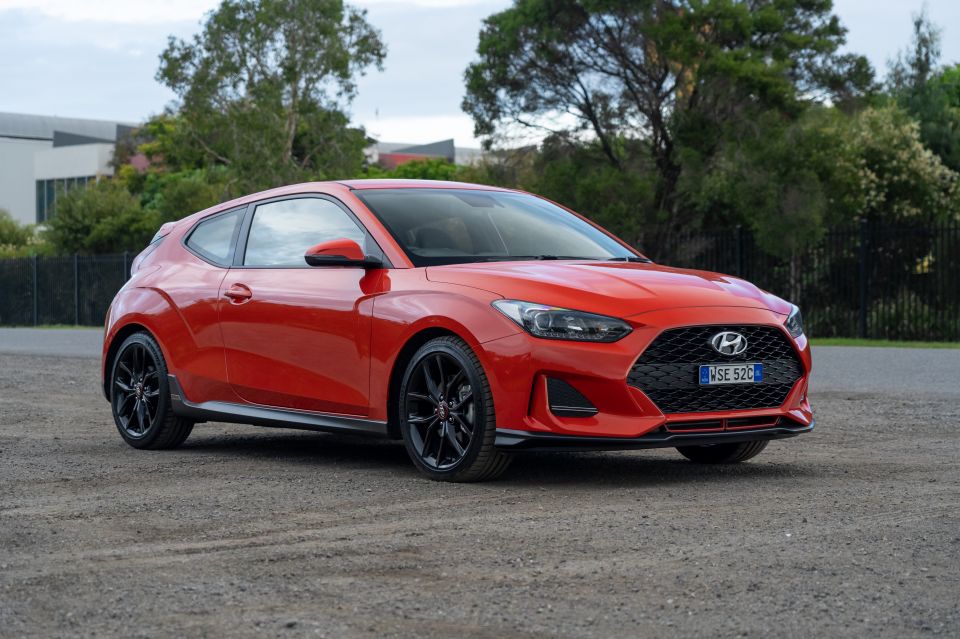
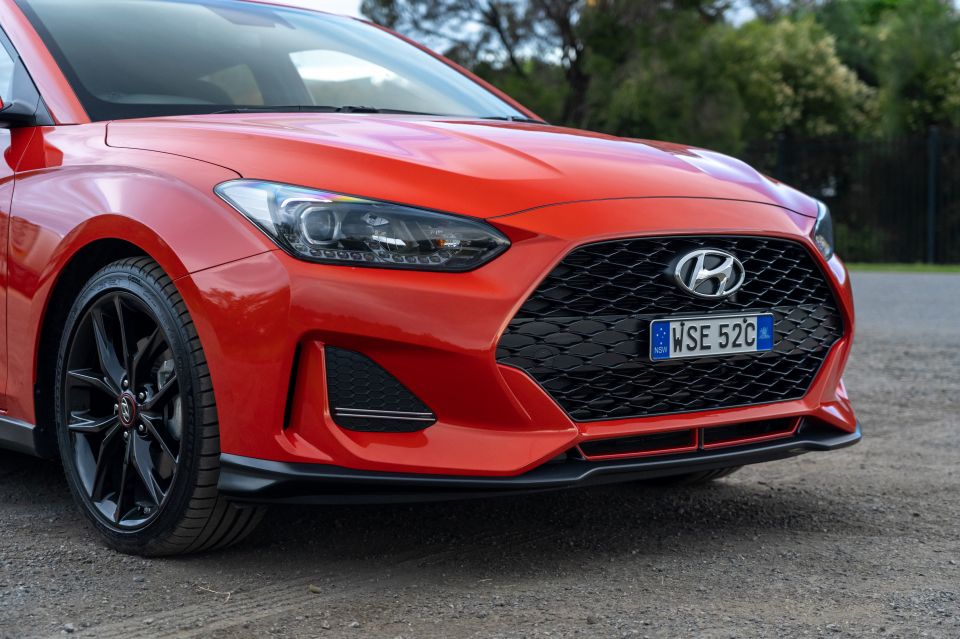

News Editor

News Editor


News Editor

News Editor
Quickly see how this car stacks up against its competition. Select any benchmark to see more details.
Where expert car reviews meet expert car buying – CarExpert gives you trusted advice, personalised service and real savings on your next new car.
Do you remember the days of affordable coupes? Once upon a time, almost every manufacturer offered one in Australia.
From the perennial Honda Integra and Toyota Celica to shorter-lived nameplates like the Eunos 30X, there seemed to be a coupe for every taste and budget.
Those days are gone. In 2020, few coupes remain in the VFACTS sport under $60k category.
Fewer still are priced at the lower end of that spectrum. At the circa $30,000 mark there’s just the Hyundai Veloster and the Subaru BRZ and Toyota 86 twins.
The Japanese twins couldn’t be more different from the Veloster, which is more of a spiritual successor to the Toyota Paseos and Mitsubishi Lancer Coupes of yore.

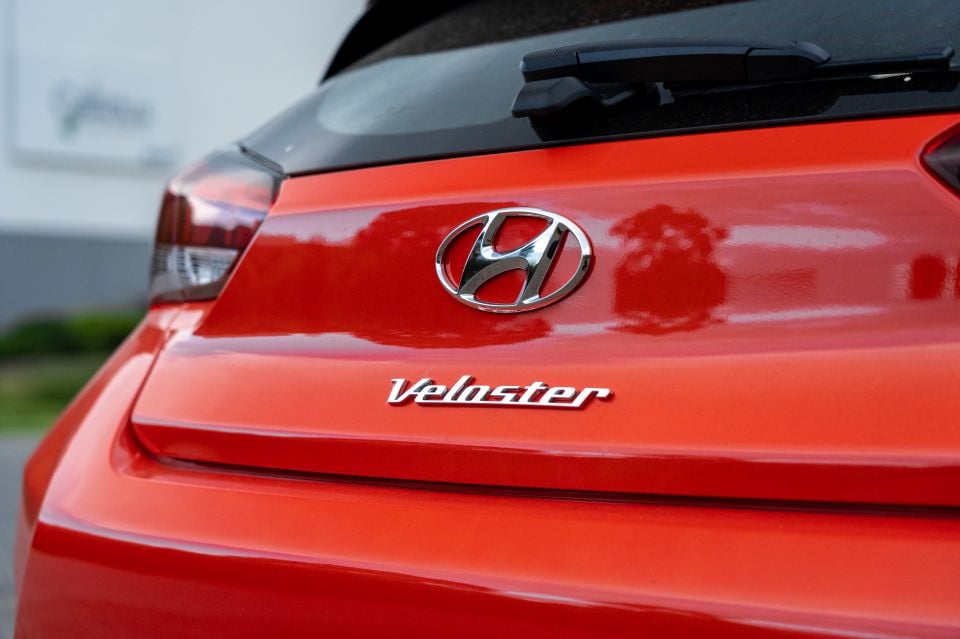
It follows the same recipe as those cars, featuring a more shapely coupe body on the same platform as a run-of-the-mill hatchback/sedan offering – in the Veloster’s case, the same underpinnings as the Hyundai Elantra and i30.
You’d never know it just by looking at it thanks to its fetching looks.
It’s 54mm lower and fractionally wider than an i30 but, proportionally, the differences appear so much greater.
The Hyundai Veloster has a hunkered down stance at the rear, like a sprinter crouched down on their mark.
If you like the idea of a small Hyundai but want something more distinctive, the Veloster may pique your interest.
The Hyundai Veloster’s extra style comes at a premium.
The mid-range Veloster Turbo is priced at $35,490 before on-road costs with a manual transmission, as featured here. An automatic transmission is available for an extra $3000.
That price is for a car with a feature list largely the same as an i30 N-Line, which costs just $26,740 before on-road costs. It also has the exact same powertrain as the featured Veloster.
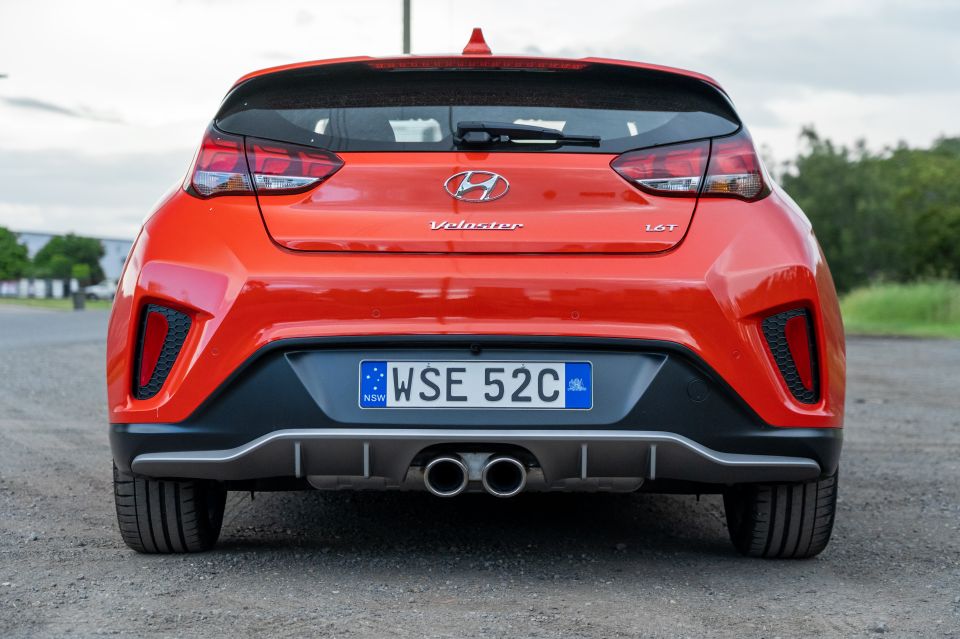
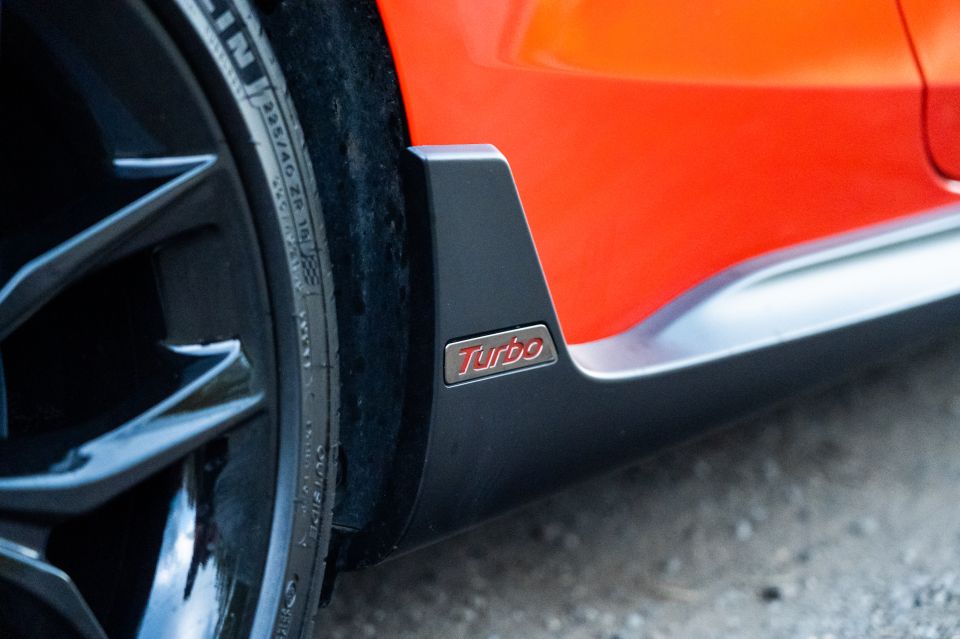
Metallic paint, such as the vivid Tangerine Comet shade of our tester, is an extra $595.
You can get a cheaper Veloster. The range opens with a naturally-aspirated 2.0-litre four-cylinder model called, simply, Veloster.
It’s priced at $29,490 before on-road costs, but that’s still $8000 more than an equivalently-specified i30.
It also has an engine vastly inferior to that of the Veloster Turbo and still costs more than an i30 N-Line. Pass.
At least there isn’t a more powerful i30 available at the same price point as the Veloster Turbo, though the range-topping Veloster Turbo Premium gets uncomfortably close to the i30 N in price.
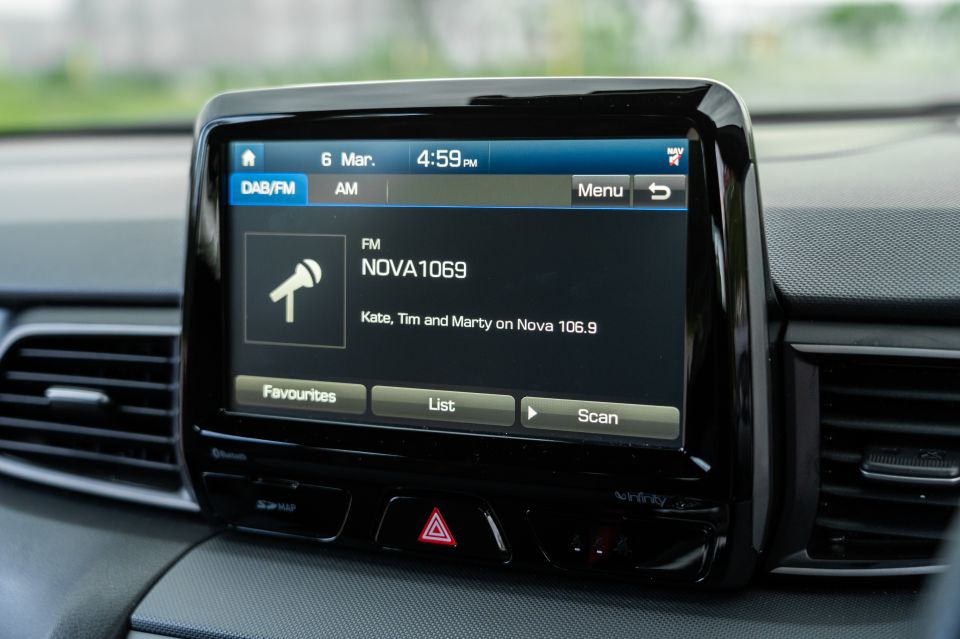
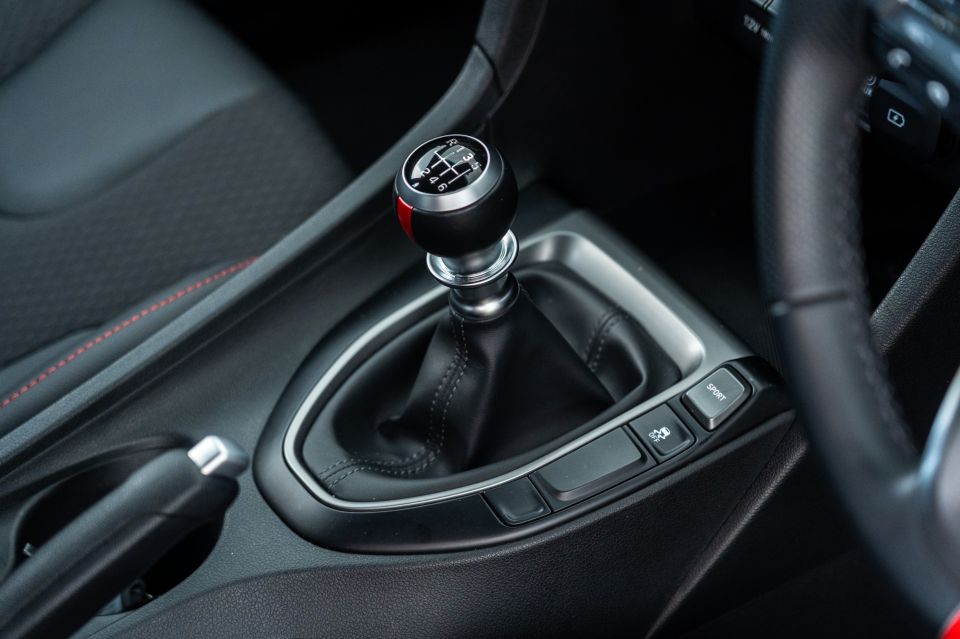
Buy your new car without the stress. It's fast, simple and completely free.

Great service from Travis and team, second time I have used this business would not hesitate to recommend them to anyone
Craig C.
Purchased a Ford Ranger in Sunshine Coast, QLD
CarExpert helped Craig save $7,224 on his Ford Ranger, now let us save you on your next new car.
Get your BEST priceThe Veloster Turbo comes standard with an 8.0-inch touchscreen infotainment system with Android Auto, Apple CarPlay, and satellite navigation.
There’s also DAB+ digital radio, an Infinity eight-speaker premium sound system, a reversing camera with rear parking sensors, and proximity entry with push-button start.
The Turbo is distinguished visually from the entry-level Veloster through the use of different 18-inch alloy wheels and LED headlights, while inside there’s also alloy pedals and unique cloth-and-leather seating surfaces.
If you want adaptive cruise control, you’ll have to pay the extra $3000 to get the automatic. Manual models stick with regular ol’ cruise control.
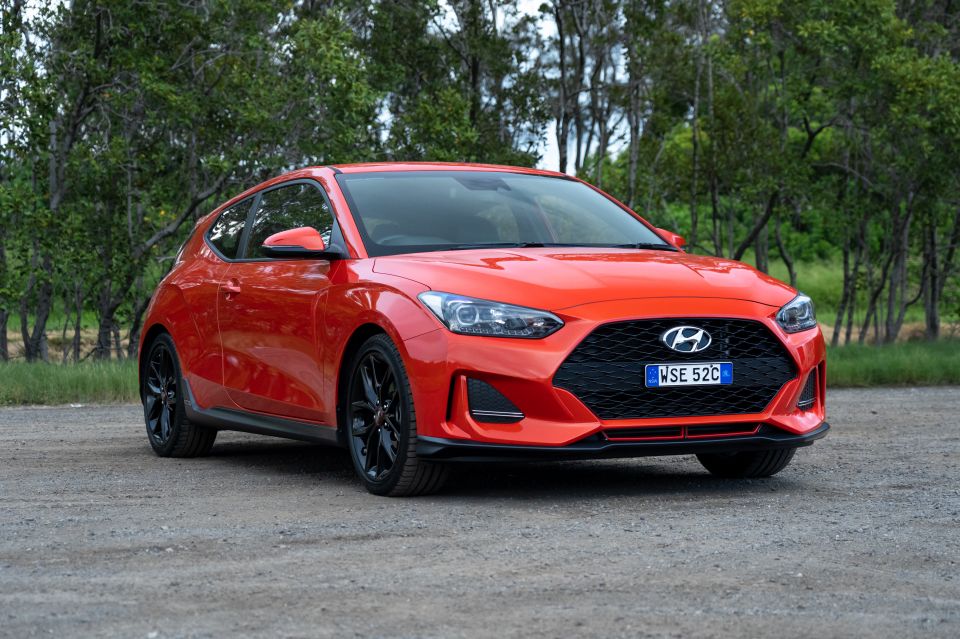
The current generation Veloster only arrived in Australia in late 2019 and hasn’t been tested by ANCAP yet.
We can’t speculate as to what kind of rating it would receive, however other cars on this platform – like the i30 – have earned five-star ratings.
All Velosters come standard with autonomous emergency braking (AEB) with forward-collision warning, as well as lane-keeping assist, anti-lock brakes and front, front-side and curtain airbags.
The mid-range Turbo adds blind-spot monitoring and rear cross-traffic alert. Turbo models with the automatic transmission add a more sophisticated AEB system with pedestrian and cyclist detection, though manual models keep the standard system.
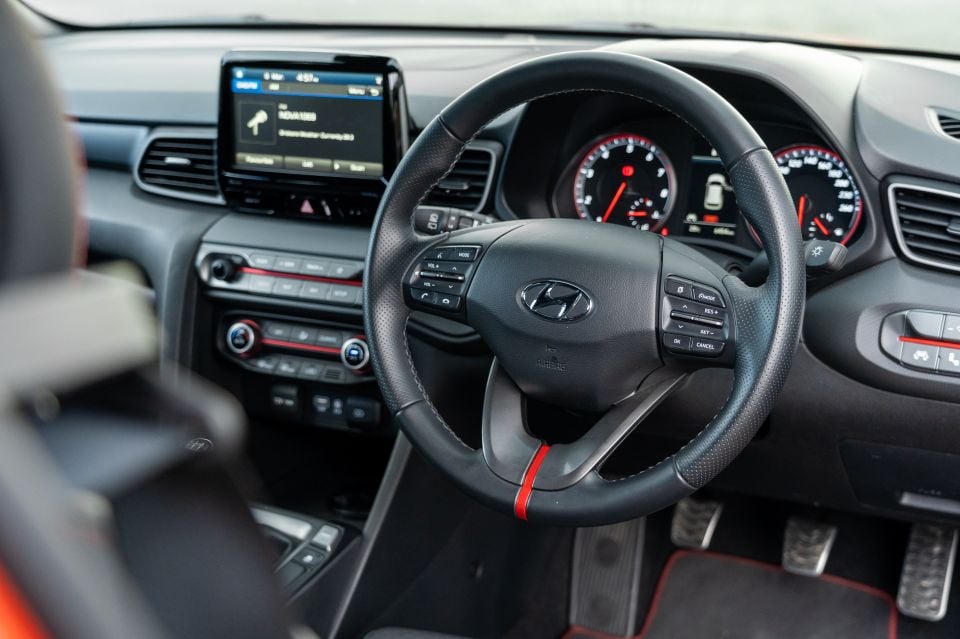
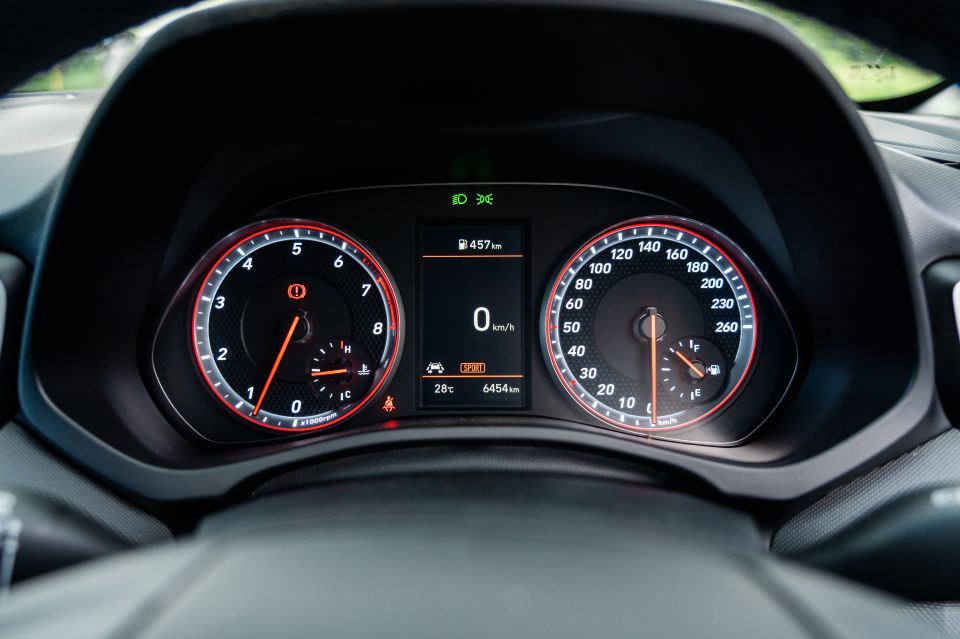
You step down into the Veloster Turbo. It’s surprisingly low and the long, coupe-style driver-side door makes ingress and egress more difficult than in an i30.
Inside, there’s an attractive dashboard with a nice, textured dash top and a somewhat asymmetrical centre stack.
Red metallic trim spears through the switchgear and wraps around the Veloster’s start button.
Red accenting is also used on the shifter, steering wheel and seats.
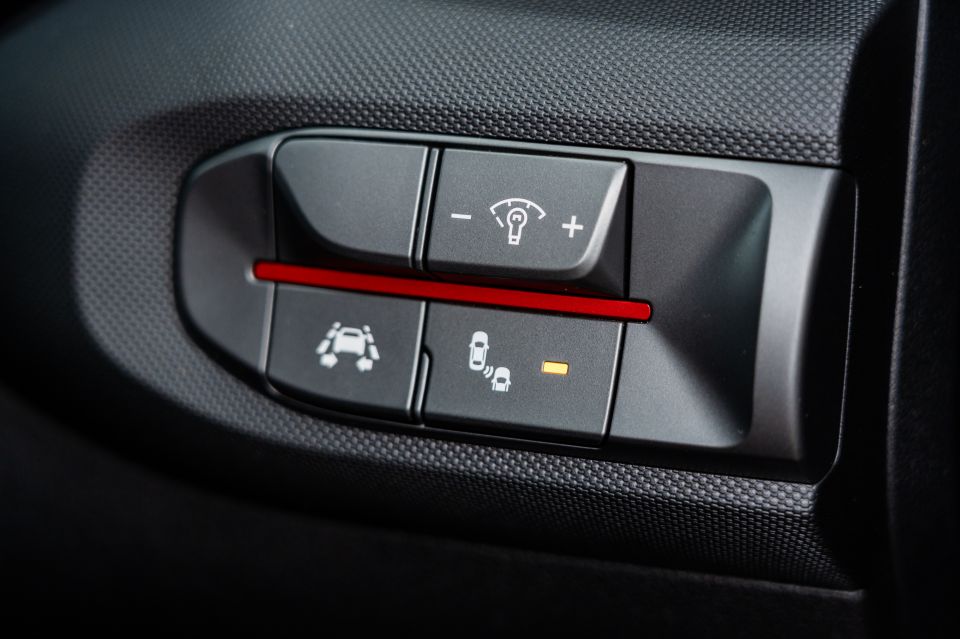
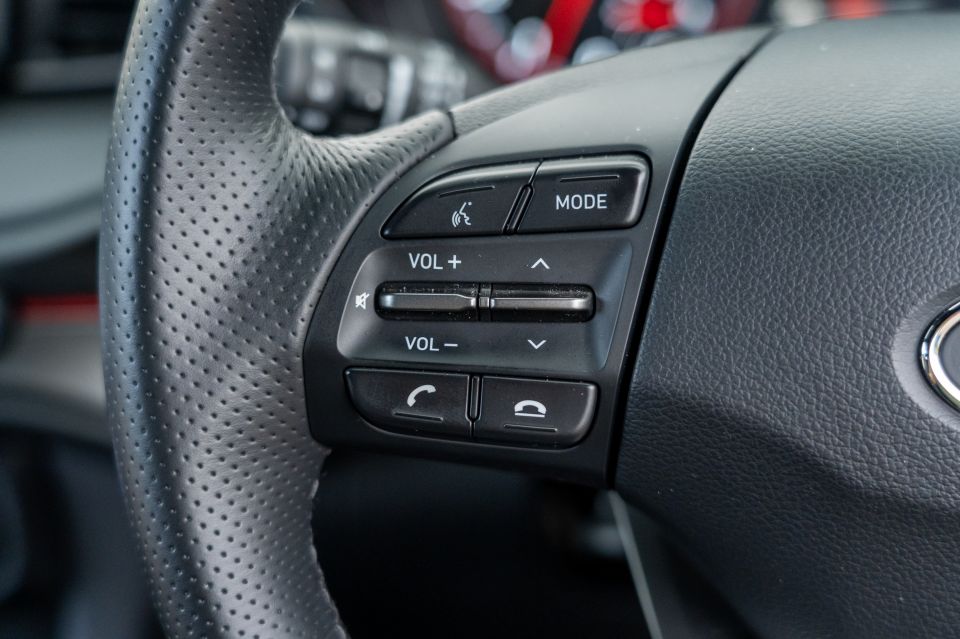
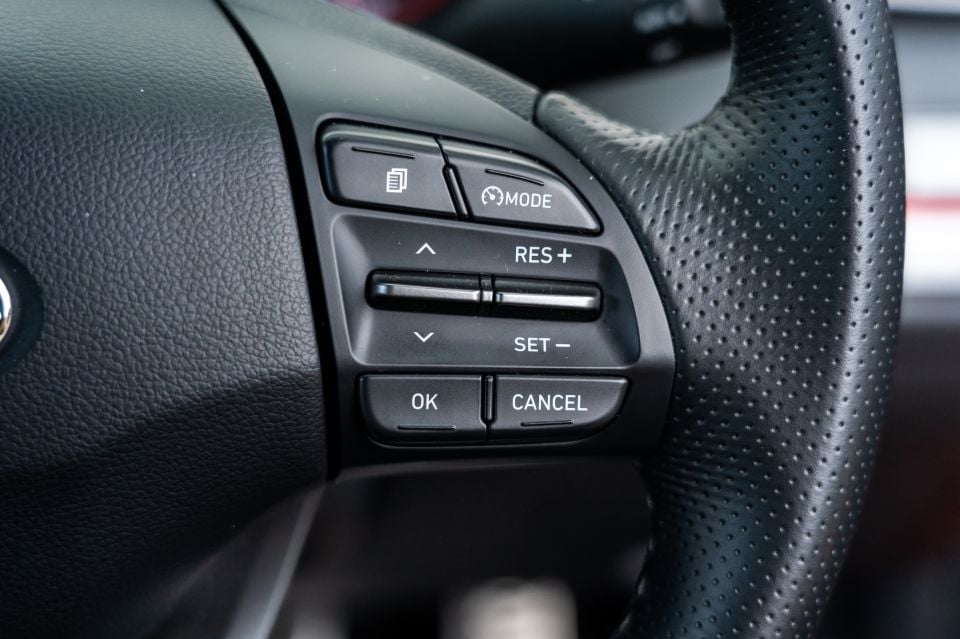
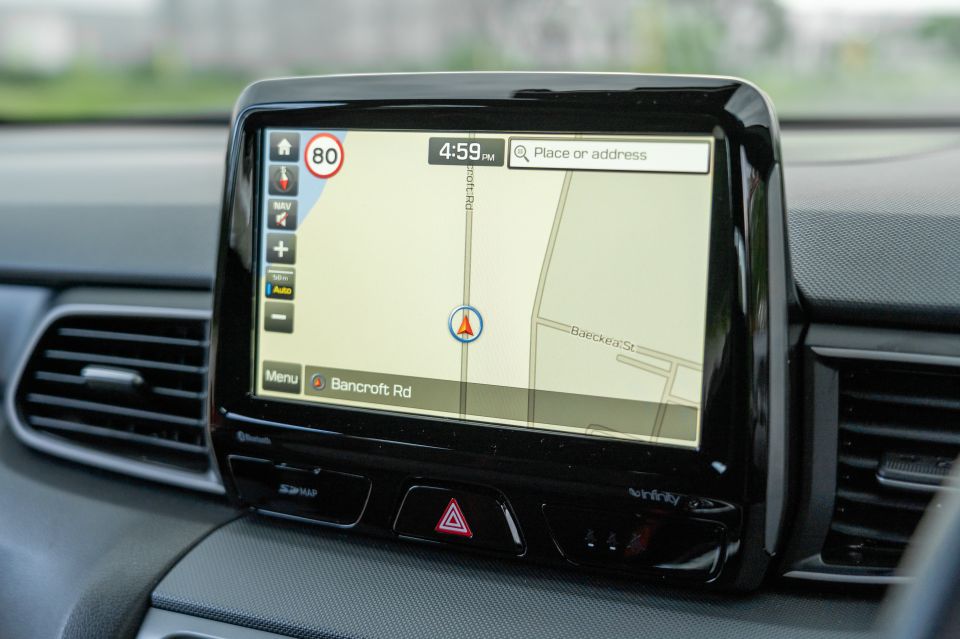
Visibility is sub-par, the Veloster’s rear window resembling a mail slot. Thankfully there’s standard blind-spot monitoring and rear cross-traffic alert.
Material quality is no better than a cheaper i30 or Kia Cerato. The doors are vast expanses of hard plastic, the headliner feels thin and cheap, and there are some large cutlines at the base of the centre stack.
Much nicer are the seats, which are upholstered in a combination of leather and cloth trim. They look good and they’re comfortable.
The rear of the cabin is surprisingly accommodating. Despite the sloping roofline, there’s enough headroom for somebody around 180cm in height.
There’s also ample legroom, the Veloster spanning the same 2650mm wheelbase as the i30 on which it’s based.

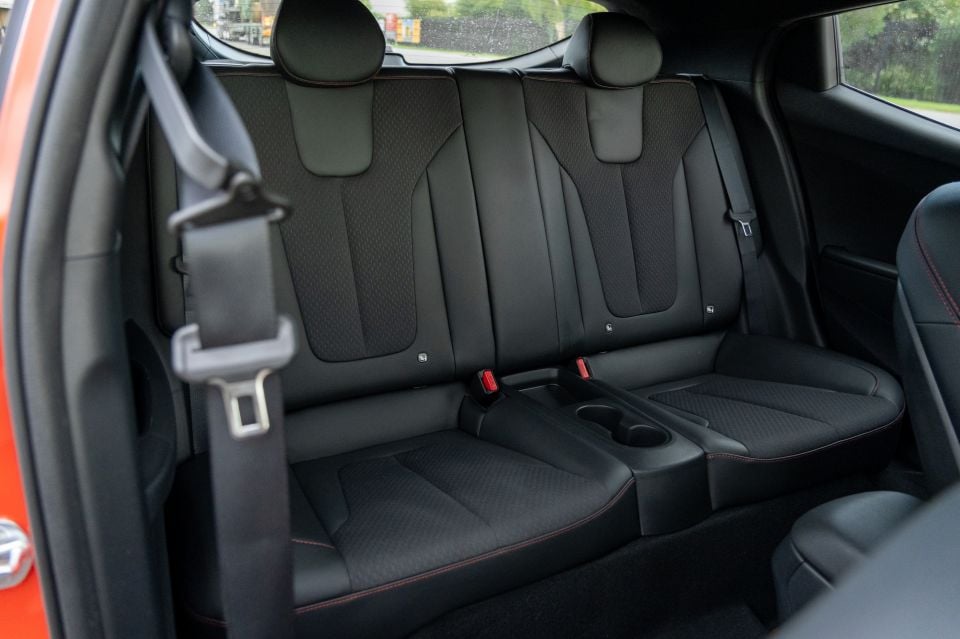
If you have child seats, there are three top-tether anchors and two ISOFIX points.
The passenger side of the car features two doors, while the driver’s side has one long, coupe-style door.
That makes loading children into the back of the Veloster much less of a hassle than with other coupes.
Though there’s naturally a visible cut-line, the rear door is disguised somewhat through the placement of the door handle up in the C-pillar.
It’s hidden enough that it makes you wonder why Hyundai didn’t just do the same thing on the driver’s side.
Also puzzling: the Veloster is a four-seater, even though its cabin is just as wide as the i30. Between the two rear seats is a plastic console of sorts with cupholders.
You might be confused at first as to how to open the boot. There doesn’t appear to be any kind of external release or button on the dash. Holding the button on the key fob just makes the indicators flash.
You might fumble fruitlessly for a few minutes before finding the external release, and it’s so simple you’ll be kicking yourself – it’s a button on the reverse side of the rear wiper’s base.
Opening the hatch reveals a boot with 303L of cargo volume.
That’s decent for a small, sporty coupe and it’s more than a Toyota Corolla hatch has to offer.
The rear seats split and fold 60:40 to open up a total cargo volume of 1081L.
The Veloster Turbo, as the name suggests, uses a turbocharged 1.6-litre four-cylinder engine producing 150kW and 265Nm.
It’s mated to either a six-speed manual, as on our tester, or a seven-speed dual-clutch automatic transmission.
This is the same powertrain as can be found in, among other Hyundai and Kia products, the i30 N-Line.
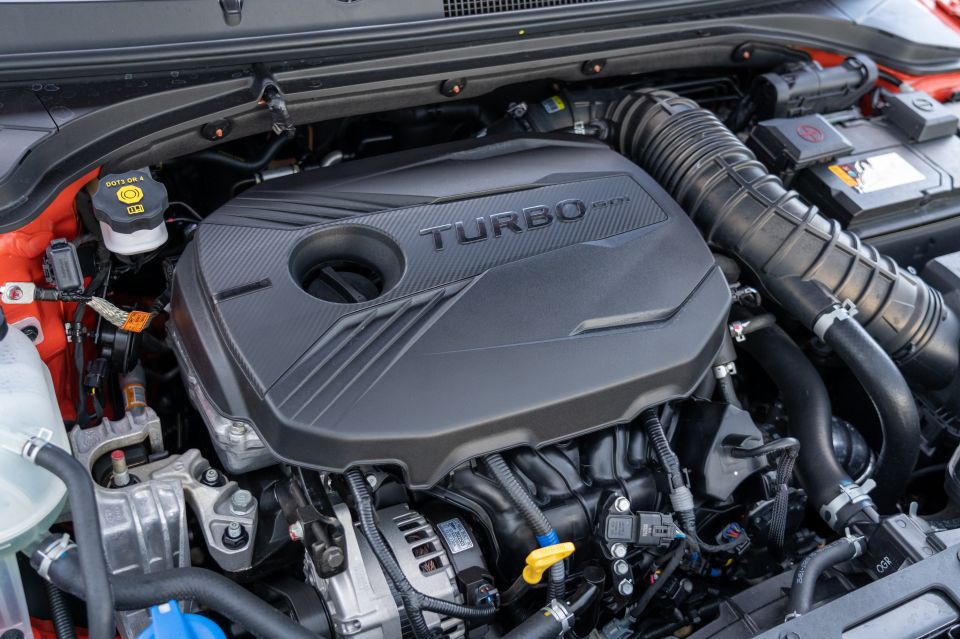
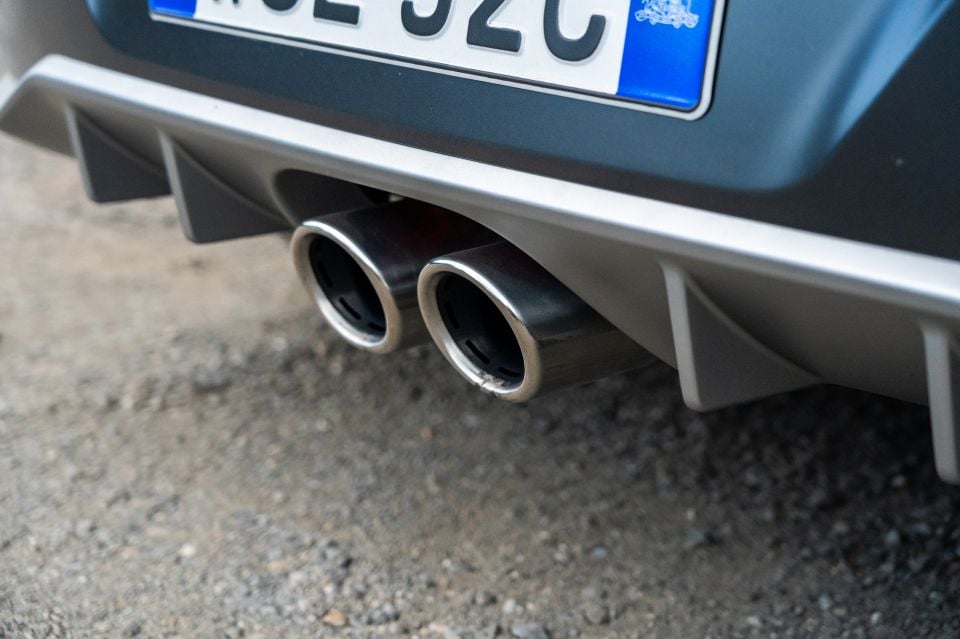
The Veloster rarely puts a foot wrong. It’s punchy, it rides comfortably, and it handles well.
Alas, it’s just missing that certain spark to distinguish itself from an i30 or Elantra. It doesn’t feel overly different from those cars to drive, and yet its styling suggests a racier driving experience.
Even something as simple as a louder exhaust would make the Veloster stand out. Instead, the Veloster Turbo has a rather forgettable sound.
As the driving experience is so very similar to that of an equivalent i30, that means the Veloster also retains the strengths of its plainer sister.
That includes a compliant, well-damped ride. The Turbo dispatches rough surfaces with an impressive degree of refinement for a small, sporty coupe.
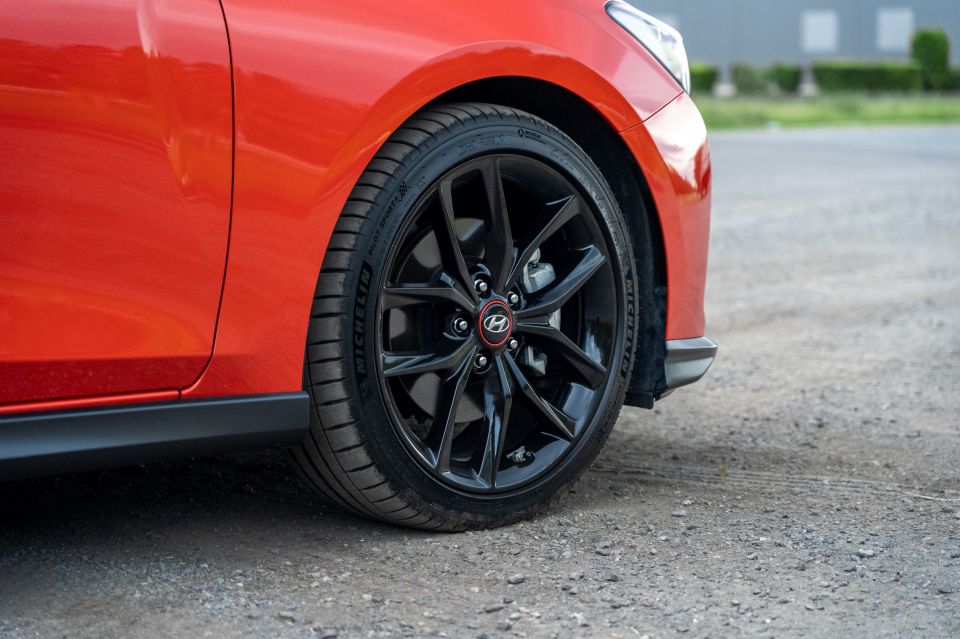
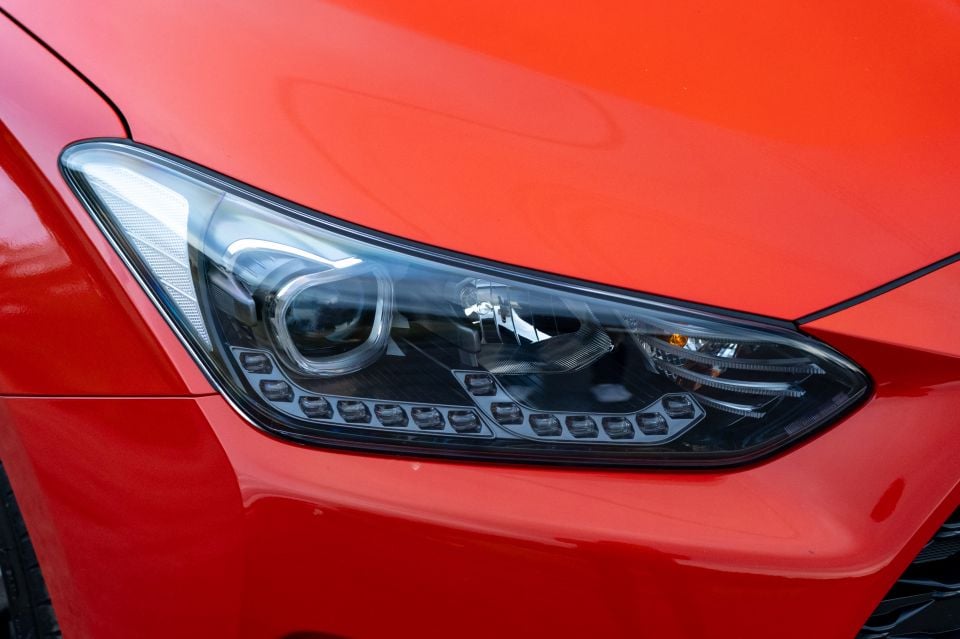
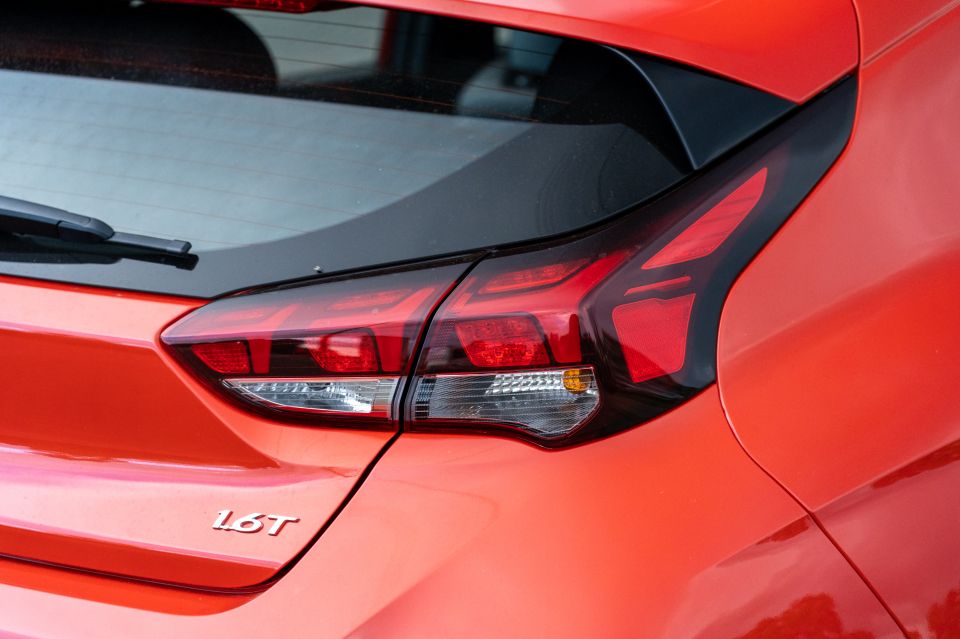
Handling, too, is commendable. The Michelin Pilot Sport 4 tyres are nice and sticky and help the Veloster Turbo stay impressively flat in corners.
There’s some torque steer off the line as the front tyres scramble to get the power to the ground but it’s generally well controlled. In more aggressive driving, you may also encounter some torque steer when powering out of a turn.
The steering is nicely weighted, even in the default drive mode. There’s no need to flick over to sport mode.
The Veloster’s turbo four is satisfyingly punchy and the six-speed manual is a great tool with which to extract the most from it.
The detents for third and fifth gear are a little vague but otherwise it has a nice shift action. The clutch, too, feels good to operate – it’s not too heavy, not too light.
The upshift indicator can be woefully misguided. At one point, going up a fairly steep hill, it instructed me to upshift to sixth.
The lane-keeping assist also reactivates whenever the car is turned on. There’s something about having lane-keeping assist on in a manual transmission car that feels wrong somehow. Its operation is also merely adequate at best.
The LED headlights are more impressive, brilliantly illuminating the road ahead.
Though it doesn’t sound especially memorable or feel especially fast, the Veloster is a good steer and endears itself to you.
It’s a good car overall, but it isn’t particularly distinguished from a much cheaper i30.
In a mix of city and highway driving, our tester averaged 9.0L/100km. The Veloster Turbo is rated at a combined 7.3L/100km.
The Veloster Turbo requires servicing every 12 months or 10,000km.
In addition to a five-year, unlimited kilometre warranty, Hyundai offers a Lifetime Service Plan with capped-price services.
The first five services each cost $299, except for the fourth which comes in at $375.
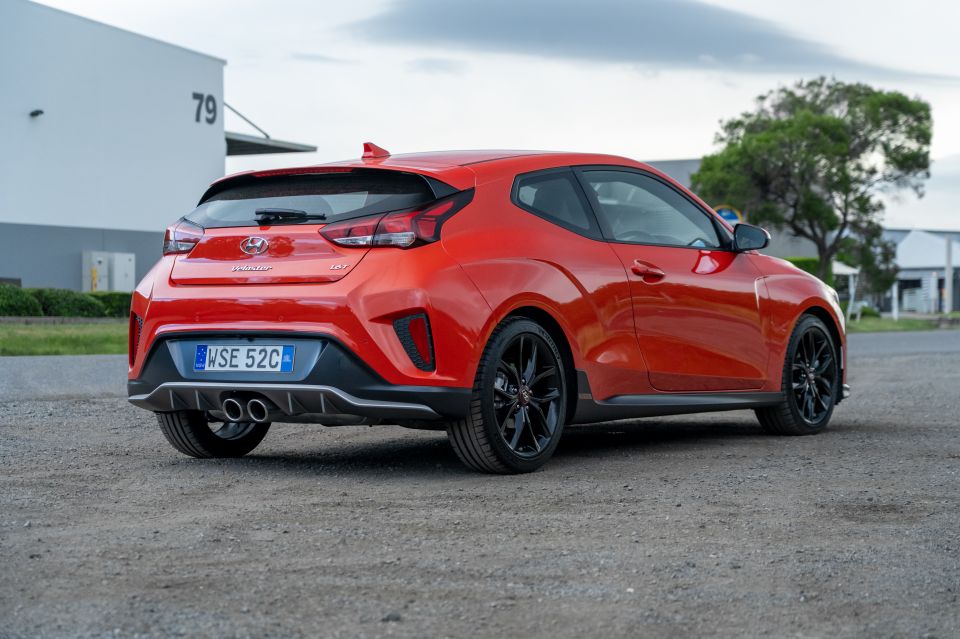
Buy your new car without the stress. It's fast, simple and completely free.

Great service from Travis and team, second time I have used this business would not hesitate to recommend them to anyone
Craig C.
Purchased a Ford Ranger in Sunshine Coast, QLD
CarExpert helped Craig save $7,224 on his Ford Ranger, now let us save you on your next new car.
Get your BEST priceThere’s a lot to like about the Veloster Turbo.
It looks great, it’s fairly practical for a small coupe, and it’s fun to drive. On the road, it rarely puts a foot wrong.
The handling is nice and balanced, the ride is compliant, the steering nicely weighted, and the gearshift quite smooth.
The biggest problem for the Veloster Turbo is that the same things can be said about the i30 N-Line. You know, the mechanically-related Hyundai with the exact same powertrain, almost identical feature list, but a price tag $9000 lower.
Yikes.
The Hyundai Veloster’s styling is fantastic but you’d have to really be in love with its looks to want to part with that much extra cash.
Hyundai’s made a lovely car with the Veloster but there’s no way it’s $9000 lovelier than an i30.
Where expert car reviews meet expert car buying – CarExpert gives you trusted advice, personalised service and real savings on your next new car.
William Stopford is an automotive journalist with a passion for mainstream cars, automotive history and overseas auto markets.


Toby Hagon
3 Hours Ago
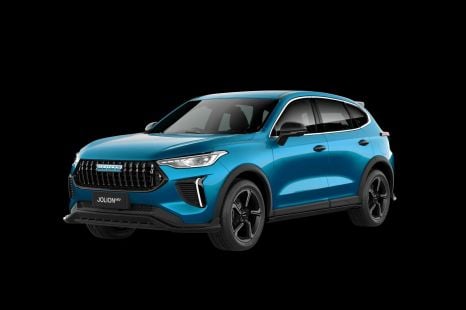

William Stopford
4 Hours Ago
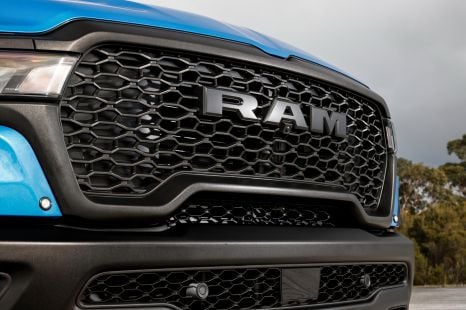

William Stopford
4 Hours Ago
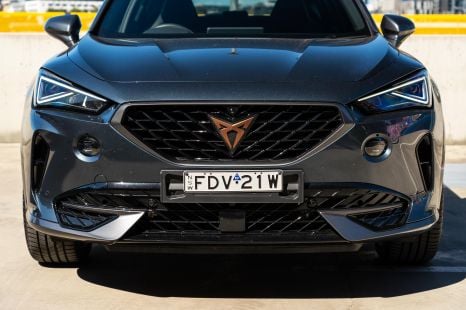

James Wong
6 Hours Ago
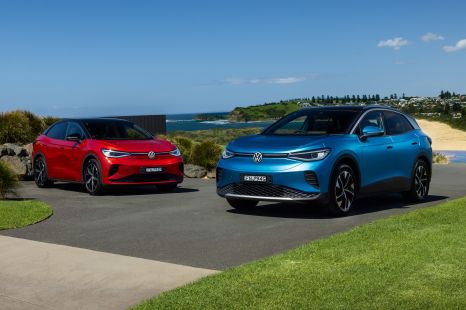

Damion Smy
8 Hours Ago
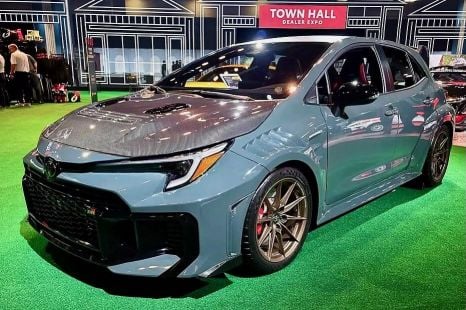

Ben Zachariah
8 Hours Ago